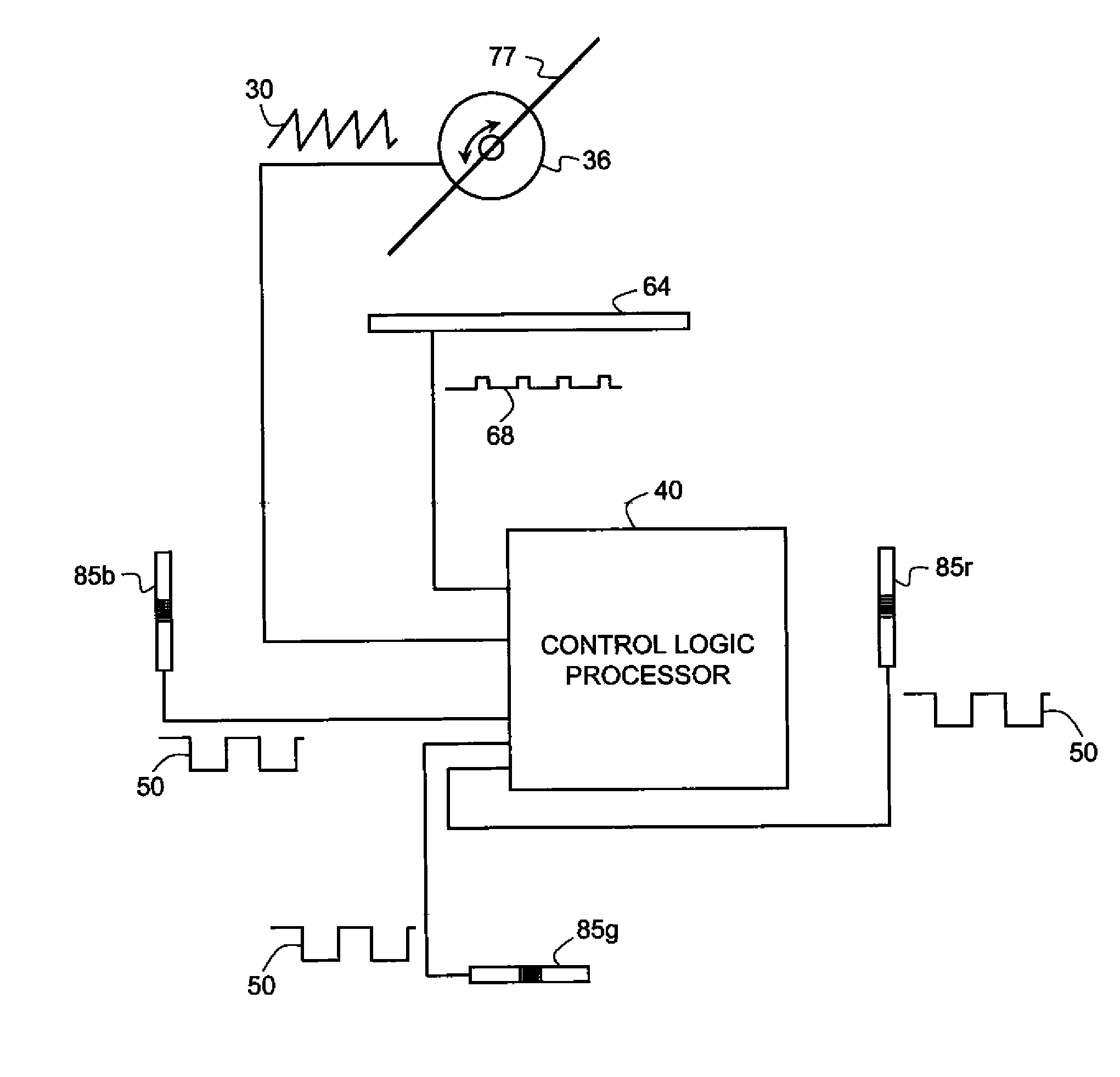Dynamic illumination control for laser projection display
a technology of dynamic illumination control and laser projection, which is applied in the direction of picture reproducers, picture reproducers using projection devices, instruments, etc., can solve the problems of difficult to increase c/r, add significantly to the cost of the projection system, and the mechanical iris of the '314 disclosure must be a high-speed device, so as to minimize the stray light on the screen, eliminate hysteresis, and minimize the effect of stray ligh
- Summary
- Abstract
- Description
- Claims
- Application Information
AI Technical Summary
Benefits of technology
Problems solved by technology
Method used
Image
Examples
Embodiment Construction
[0038]The present description is directed in particular to elements forming part of, or cooperating more directly with, apparatus in accordance with the invention. It is to be understood that elements not specifically shown or described may take various forms well known to those skilled in the art. Figures shown and described herein are provided in order to illustrate key principles of operation of the present invention and are not drawn with intent to show actual size or scale. Some exaggeration may be necessary in order to emphasize relative spatial relationships or principles of operation.
[0039]Apparatus and methods of the present invention can be applied to any type of digital imaging apparatus that modulates substantially polarized light from a solid-state laser light source, in particular, from one or more semiconductor lasers or laser arrays. This can include both area spatial light imaging modulators, such as digital micromirror or DLP devices that reflect light and LCDs tha...
PUM
 Login to View More
Login to View More Abstract
Description
Claims
Application Information
 Login to View More
Login to View More - R&D
- Intellectual Property
- Life Sciences
- Materials
- Tech Scout
- Unparalleled Data Quality
- Higher Quality Content
- 60% Fewer Hallucinations
Browse by: Latest US Patents, China's latest patents, Technical Efficacy Thesaurus, Application Domain, Technology Topic, Popular Technical Reports.
© 2025 PatSnap. All rights reserved.Legal|Privacy policy|Modern Slavery Act Transparency Statement|Sitemap|About US| Contact US: help@patsnap.com



